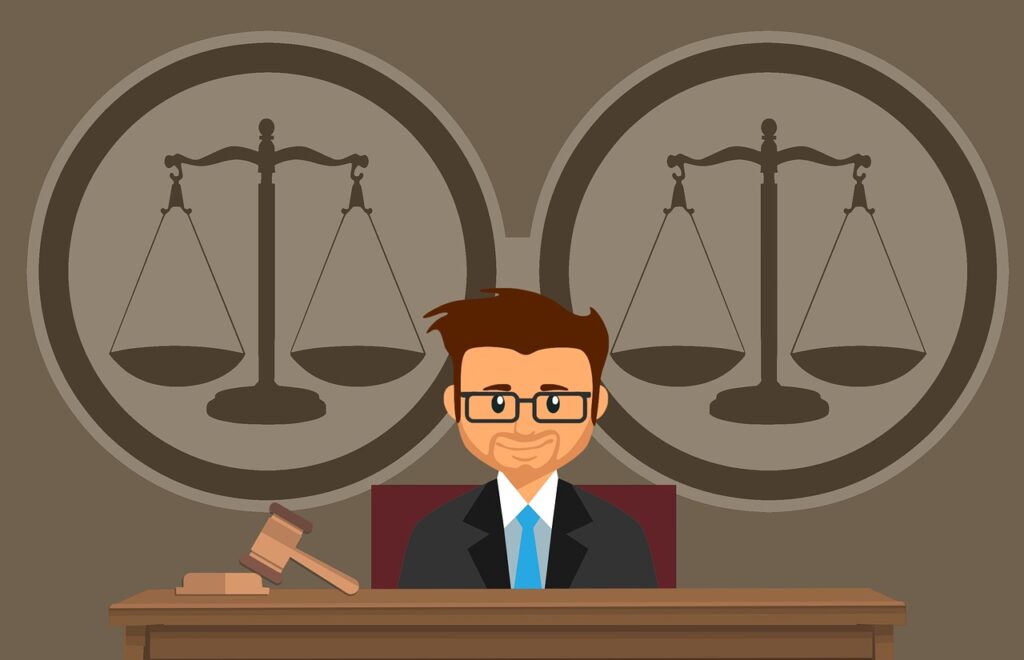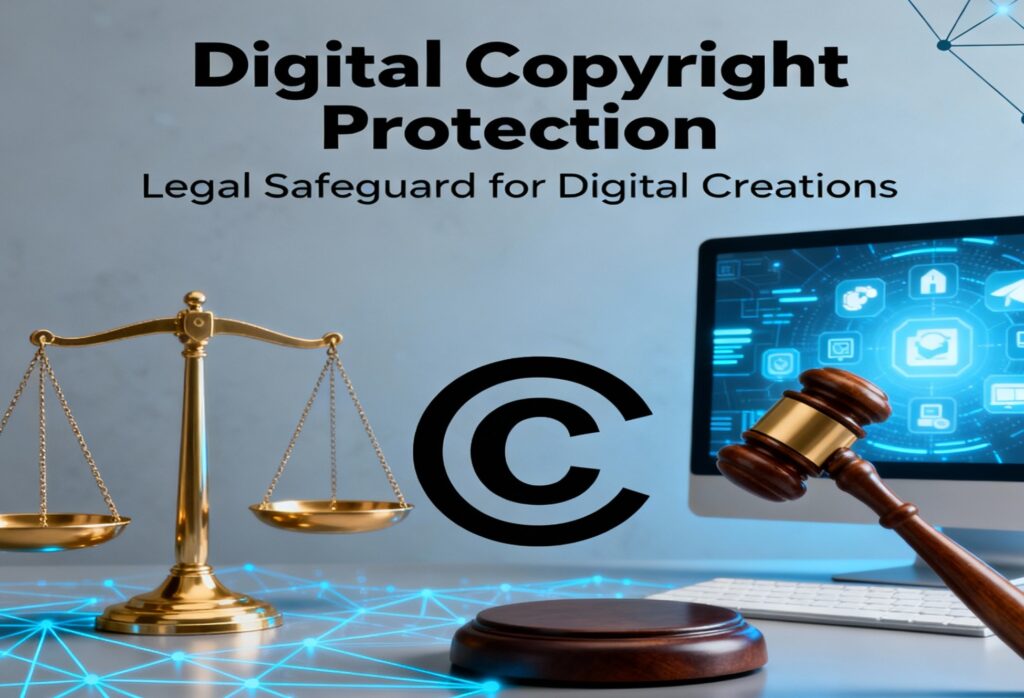Published On: August 23rd 2025
Authored By: Komal Soni
Balaji Law College, Pune
Abstract
In past few years, blockchain technology has rapidly transformed diverse sectors such as finance and real estate, and its growing significance in legal field , especially regarding digital evidence, is both impactful and timely. This article is about the extent of blockchain records that can be admitted as an evidence in judicial proceedings. This article focuses on what are the Indian and international legal frameworks, and how the courts perceive the digital immutability and cryptographic integrity. Firstly it begins with understanding what is blockchain evidence and how does it works through case laws and their judgement, and what are the future possibilites of integrating blockchain into the evidentiary landscape.
Keywords: Blockchain, Evidence Law, Bharatiya Sakshya Adhiniyam, Section 63, Digital Evidence, Legal Admissibility, Smart Contracts, Forensic technology.
Introduction
As the legal system adapts to the digital age, the concept of evidence is evolving day by day, as digital records increasingly take center stage in legal proceedings. Electric documentation is now more common, bringing new complexities to judicial procedures. Within this digital transformation, blockchain has emerged as a compelling tool, offering trustworthy mechanism like timestamps and data integrity that align well with legal requirements.
Despite its potential, the use of blockchain as legal evidence presents several complexities. Judicial system globally and notably in India are in the process of adapting to the demands of verifing, authenticating, and admitting such technology advanced records. This article aims to explore the compatibility of blockchain technology with current evidentiary principles and its potential impact on legal procedures.
Blockchain as a Source of Evidence
Most of the countries including India requires that whatever evidence that is electronic evidence be must be certified by an expert in that field. Electronic evidence undermined by the courts as compared to physical evidence. The SC has suffered with the reliability its attributes to electronic evidence. In Anwar P.V.v.P.K.Basheer in 2014, the Supreme Court ruled that electronic records were not admissible until accompanied by a proper certificate under section 65B.
In this context, the Supreme Court had an opportunity to provide much-needed clarity on the interpretation of Section 65B of the Indian Evidence Act in the case of Arjun Panditrao Khotkar v. Kailash Kushanrao Gorantyal. While significant scholarly and judicial discourse had developed around this provision following Anvar P.V. v. P.K. Basheer, the bench in Arjun Panditrao did not fully engage with these interpretative complexities. A careful reading of the judgment reveals that the Court reaffirmed the mandatory nature of the certificate under Section 65B(4), as established in Anvar, without offering a robust, independent rationale for doing so. The judgment largely bypassed a detailed examination of the statutory language or its policy underpinnings—which arguably support the view that the certificate may be a sufficient rather than an indispensable requirement. As a result, the judgment leaves unresolved the broader question of whether oral or secondary evidence could alternatively satisfy the conditions of sub-section (2), thus perpetuating ambiguity in the evidentiary framework.
Historical Evolution
The evolution form Indian evidence act 1872 to the Bhratiya Sakshya Sanhita 2023, remarks a watershed moment in the Indian’s legal history. This transition reflects a active effort to align the rules of evidence with the originality of a digitally driven society and the growing need for procedural efficiency in justice delivery. The journey of transition in evidence law in India spans 150 years and has been shaped by historical legacies, technological disruption, and chances for systemic reform.
The colonial legacy: Indian Evidence act 1872
Indian Evidence act 1872 enacted during the british era, pioneerinvv attempt to codify and unify the law of evidence across the country. Draftedd by Sir James Fitzjames Staphen, it focuses to resolve the inconsistencies arising form the coexistence of diverse customary laws and religious practices governing evidences in pre-colonial India.
At its inspection, the IEA was a significant step forward bringing clarity, structure, and predictability to evidentiary proceeding. However, its frameworks was designed around physical, paper-based documentation and human testimony, reflecting the realities of the 19th century. With the advent of digital records, electronic communication, and cyber-related crimes, several of its provisions begin to appear outdated and ill-equipped to handle modern evidentiary challenges.
Challenges in Admitting Blockchain Evidence
1. Rigid Requirement of 65B(4) Certificate
The Court reaffirmed that the certificate under Section 65B(4) is mandatory unless the original device is presented.
This creates difficulties in cases where:
– The device is part of a larger network or cloud system, such as public blockchains or remote servers.
– The party seeking to admit the evidence does not control or possess the device, making it hard to obtain the certificate.
Challenge: This requirement creates procedural rigidity, especially in complex or decentralized digital environments like blockchain.
2. Judicial Ambiguity Pre-Arjun Panditrao
Conflicting precedents existed:
– Anvar P.V. made the certificate mandatory.
– Shafhi Mohammad allowed some flexibility in the interest of justice.
The Arjun Panditrao decision overruled Shafhi, deeming its logic “wholly incorrect.”
Challenge: Past inconsistencies led to uncertainty in legal strategy; even after Arjun, there is still tension between fairness and procedural compliance.
3. No Clear Stage Specified for Producing Certificate
Section 65B does not specify when exactly the certificate must be filed.
The Court stated it generally must accompany the evidence but allowed for judicial discretion in civil matters.
Challenge: The lack of clarity can lead to disputes during trials, especially if certificates are submitted late or are defective.
4. Technical Limitations in Producing Original Devices
If the device is part of a complex IT infrastructure, like a blockchain node or a cloud-hosted server, producing the original becomes impractical or impossible.
Challenge: Unrealistic expectations from the parties, especially in cross-border or decentralized systems, can hinder the justice process.
5. Judicial Burden and Procedural Delays Trial judges are now expected to summon certificate holders if a party fails to obtain one.
This adds to the procedural burden on courts already dealing with delays and backlogs.
Challenge: There is a risk of prolonging trials and increasing reliance on unwilling third parties for certification.
6. Lack of Infrastructure and Rules
The Court noted the absence of clear rules under Section 67C of the IT Act, which govern:
– Data retention
– Metadata preservation
– Chain of custody protocols
Challenge: Without standardized procedures for handling electronic evidence, digital records are vulnerable to manipulation, misinterpretation, or exclusion.
7. Storage & Preservation by Service Providers
Directions were issued to telecom companies and ISPs to securely retain call detail records and data.
However, these are temporary measures until proper licensing and data retention frameworks are created.
Challenge: Reliance on private companies for evidence preservation creates legal and operational vulnerabilities.
8. No Chain of Custody Standards for Digital Evidence The Court emphasized the need to develop rules on segregation, stamping, metadata preservation, and chain of custody for electronic evidence.
Challenge: Without these standards, the authenticity of digital evidence is at risk.
Suggestions
1. Amend Section 65B to Allow Flexibility in Certification
Why: The strict requirement for a certificate under Section 65B(4) often makes it hard to admit valid electronic evidence.
Suggestion: Create exceptions or alternative methods, such as affidavits or expert testimony, when the original device is not accessible, especially in blockchain or cloud-based systems.
2. Frame Standard Operating Procedures (SOPs) for Digital Evidence
Why: Courts currently lack consistent rules on chain of custody, metadata preservation, or server-stored data.
Suggestion: The judiciary or legislature should provide clear SOPs for data handling, marking, verification, and production for trial purposes.
3. Introduce Mandatory Digital Training for Judges and Investigators
Why: Many judges and law enforcement officers do not have the skills to understand or evaluate complex digital evidence like blockchain.
Suggestion: Set up regular training programs through judicial academies and law enforcement training organizations.
4. Formulate Rules under Section 67C of the IT Act for Data Retention
Why: The lack of clear retention rules for ISPs and service providers causes loss of evidence and procedural delays.
Suggestion: Enforce mandatory retention periods and secure storage practices for CDRs, server logs, and metadata important to trials.
5. Establish a Central Certifying Authority for Electronic Evidence
Why: Parties often have trouble obtaining certificates from third-party device owners or companies.
Suggestion: Create a neutral government-backed certifying body or digital evidence registry that can issue authorized Section 65B certificates upon request.
Conclusion
Blockchain technology is quietly changing how we view evidence in India’s legal system. At its core, blockchain offers records that are nearly impossible to alter. This gives a level of trust and transparency that traditional methods simply can’t provide. For anyone concerned about the authenticity of digital documents, this represents a significant shift.
However, the journey isn’t finished. Indian courts and lawmakers are still figuring out how to incorporate this new technology into existing rules. Important questions remain: How do we verify a blockchain record? Who explains the technology in court? Can every judge and lawyer grasp what’s truly happening behind the code?
For blockchain evidence to become widely accepted, a few things must happen:
– Lawmakers need to establish clear rules for how blockchain records are verified and presented.
– Judges and lawyers require more training to understand and trust these digital tools.
– The process for submitting blockchain evidence should be straightforward and consistent.
Ultimately, blockchain has the potential to make our justice system more trustworthy and fair. But like any new tool, it needs to be used thoughtfully, focusing on both its technical strengths and the basic principles of justice. As India’s legal system evolves, blockchain could become a reliable partner in the quest for truth, provided that the rules keep up with the technology.
References
- Tech law Forum@ nalsar: Blockchain technology as evidences: Hearsay or not? Blockchain Technology as Evidence: Hearsay or Not? – Tech Law Forum @ NALSAR
- Neeraj Aarora: E-Evidence- Managing the Challenges. E-EVIDENCE – MANAGING THE CHALLENGES
- Prachi Bhardwaj: SC clarifies laws on admissibility of elcrtonic evidence without certificate under section 65B of evidence act 1872.SC clarifies law on admissibility of electronic evidence without certificate under Section 65B of Evidence Act, 1872 | SCC Times
- Vikas Upadhyay& Prakash Upadhyay: Changing facades of law on Amissibility of electronic evidence.Changing Facades of Law on Admissibility of Electronic Evidence | SCC Times
- Dhruva Gandhit & Nikita Garg: The decision in Arjun Panditrao: Admissibility of electronic evidence in India continues to face hurdles. The decision in Arjun Panditrao: Admissibility of electronic evidence in India continues to face hurdles | SCC Times
- Citation from Casemines: Neeraj Arora v. State Of Rajasthan, … | Rajasthan High Court | Judgment | Law | CaseMine
- Citation from cassemines: Arjun Panditrao Khotkar v. Kailash Kushanrao Gorantyal And Others | Supreme Court Of India | Judgment | Law | CaseMine
- Md Aadil Ansari : Case Study: Anvar P.V. v. P.K. Basheer and others




